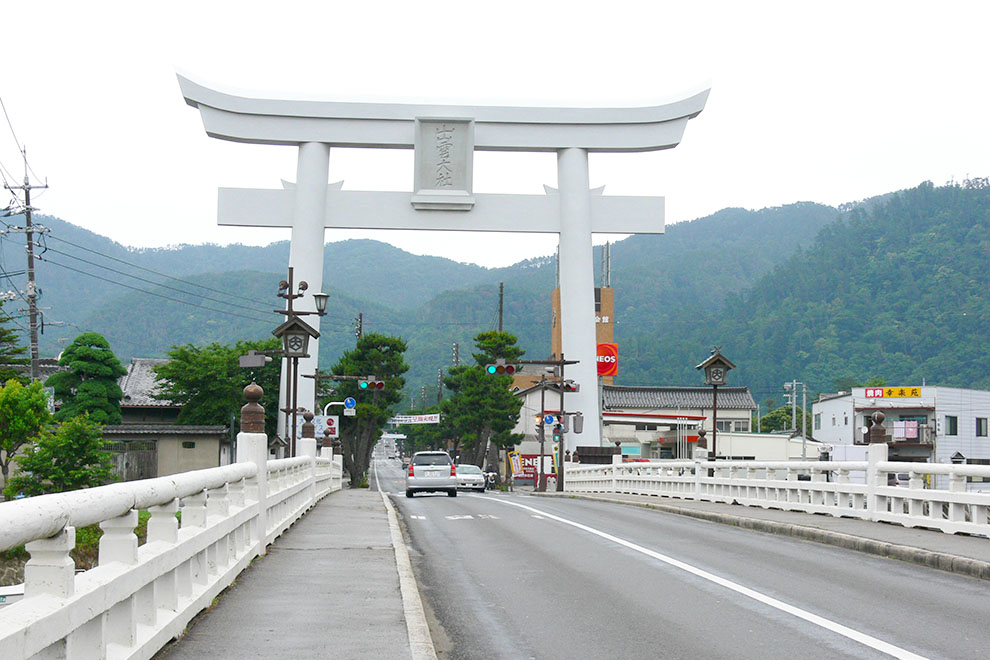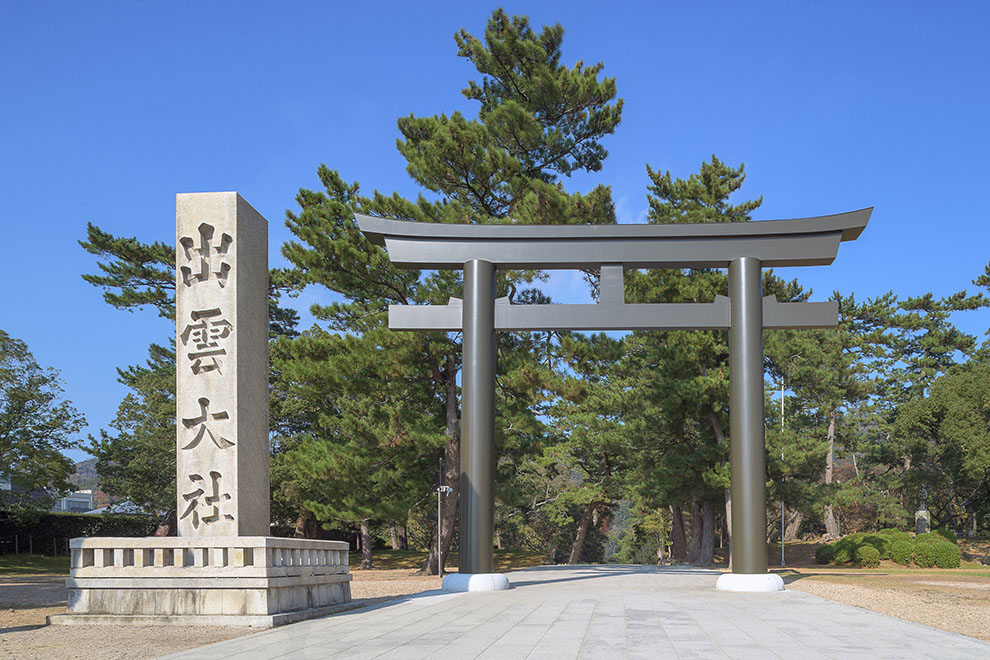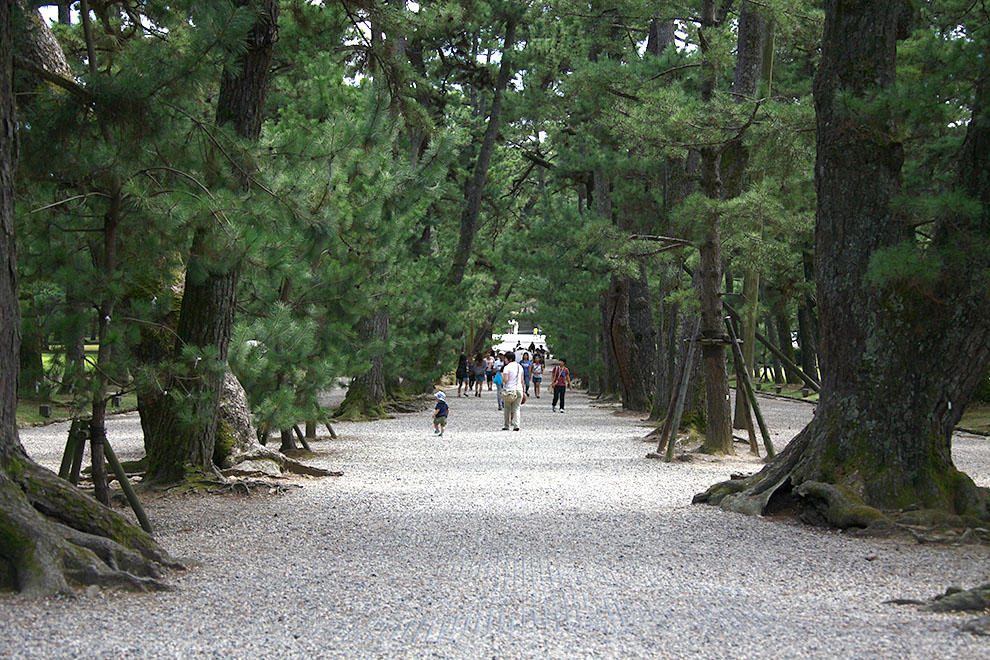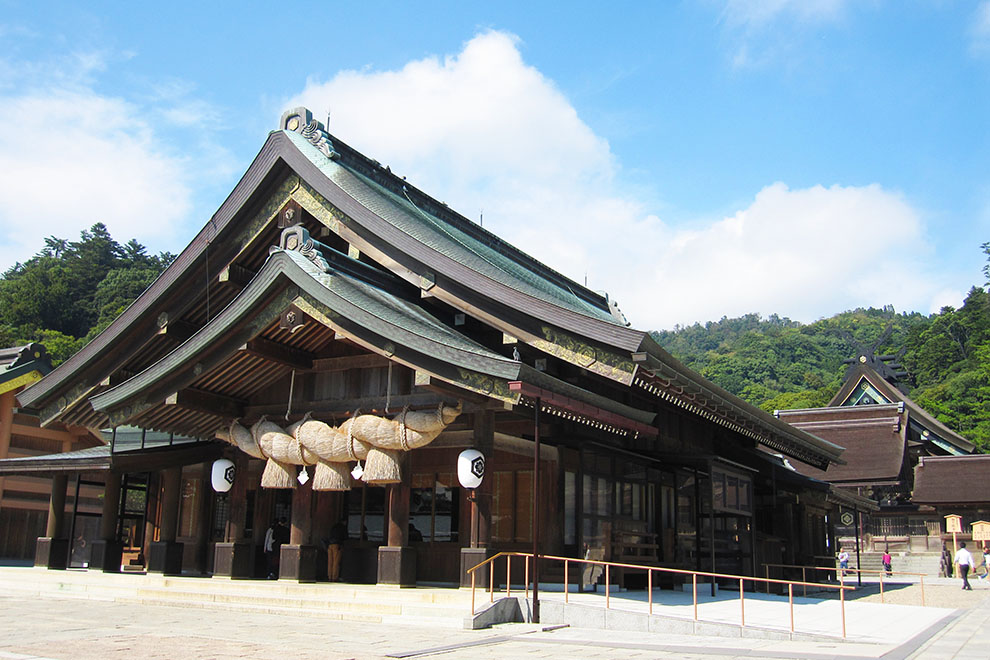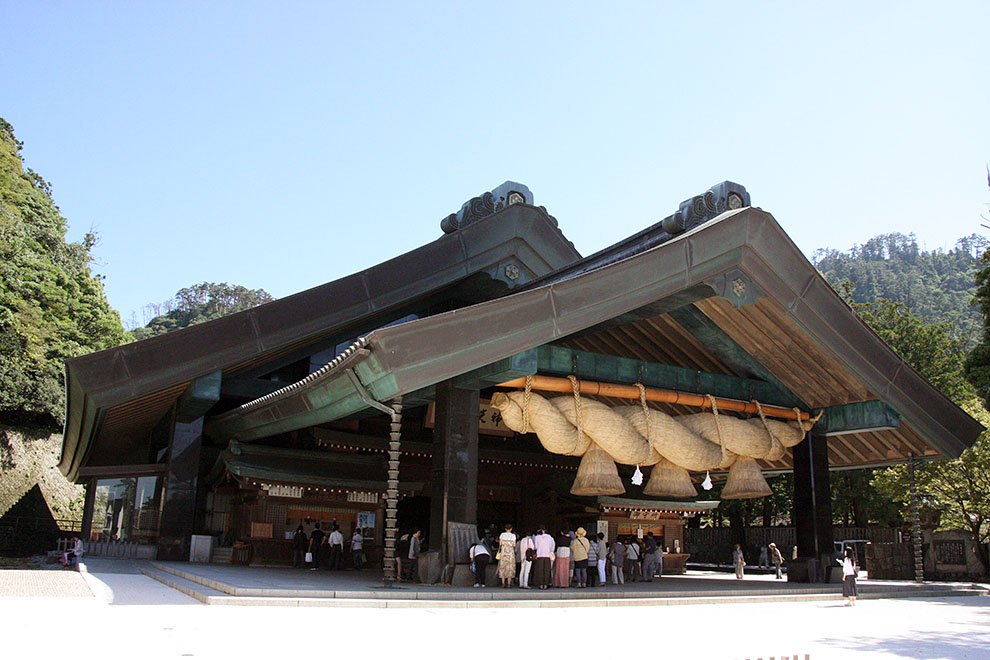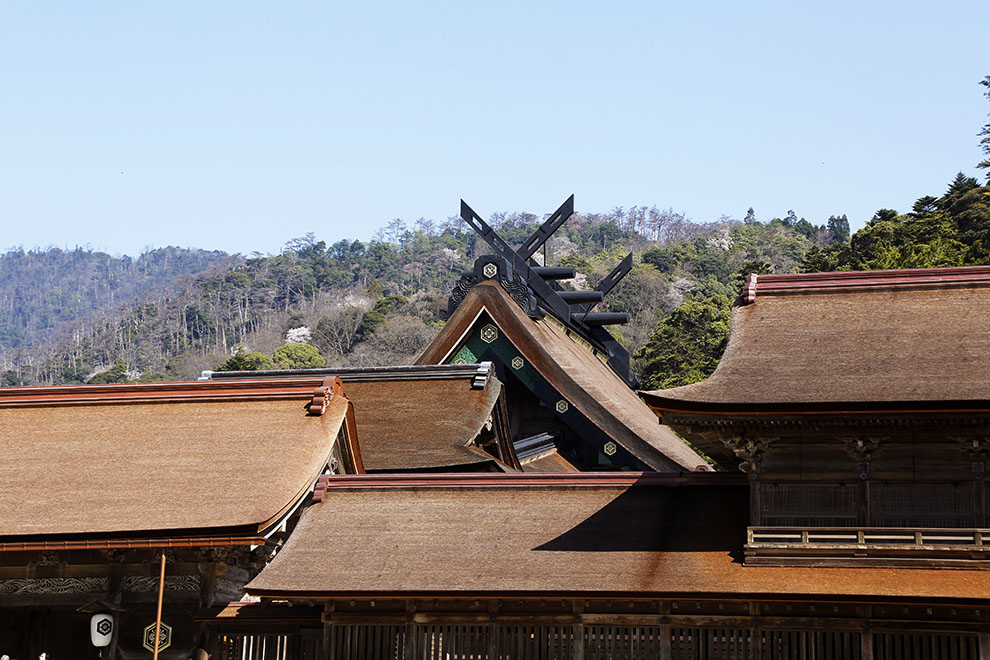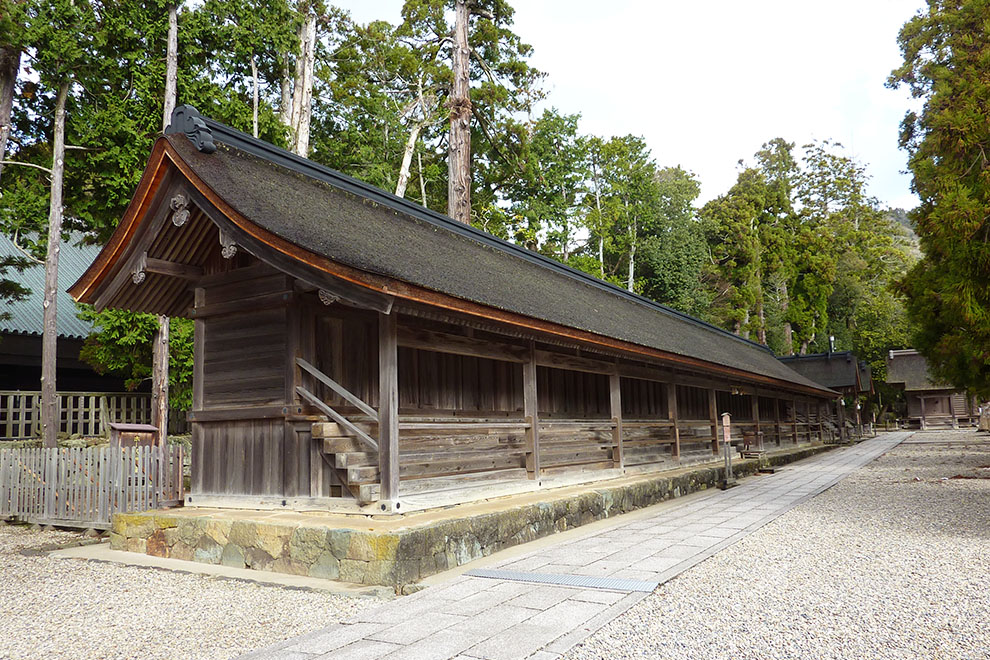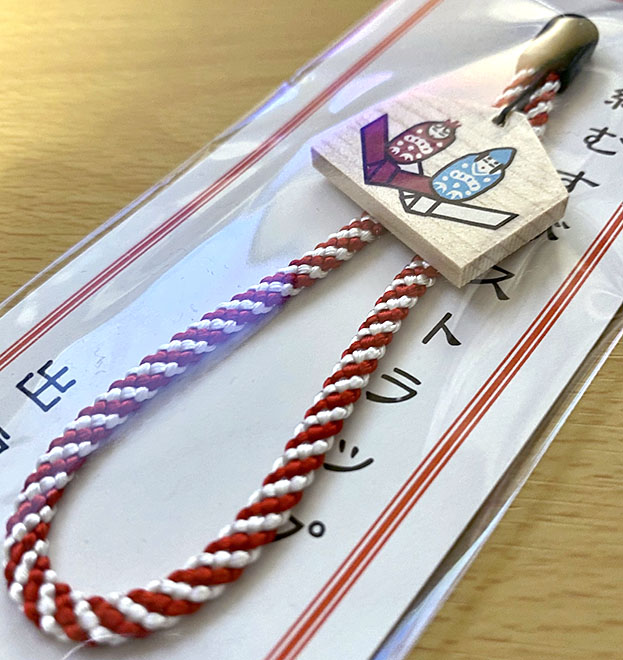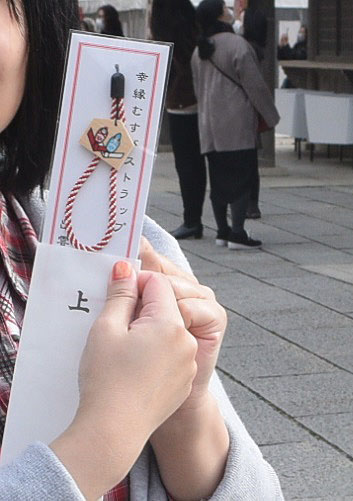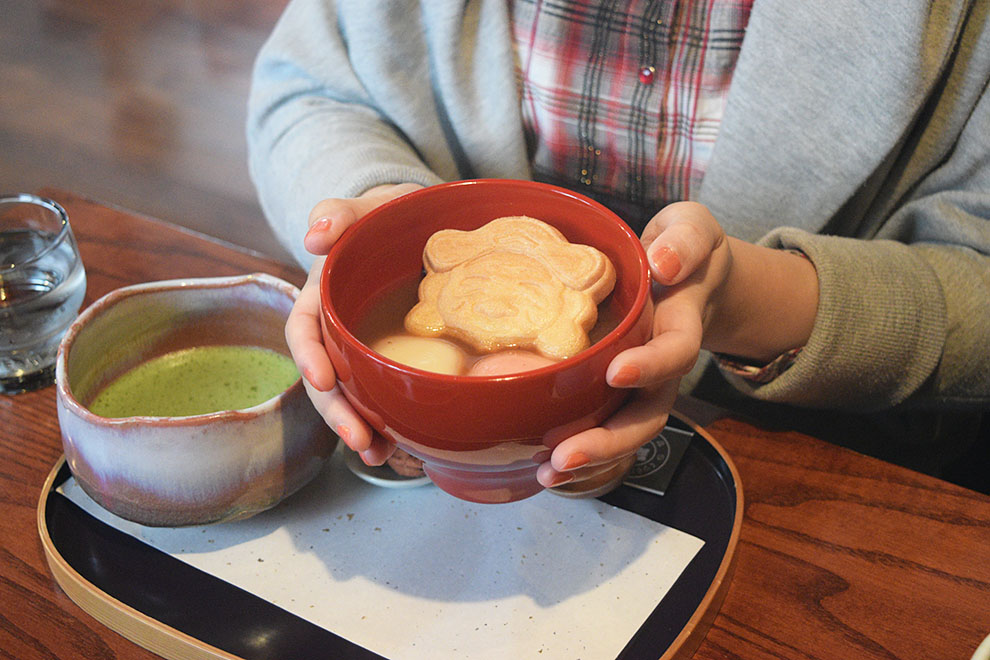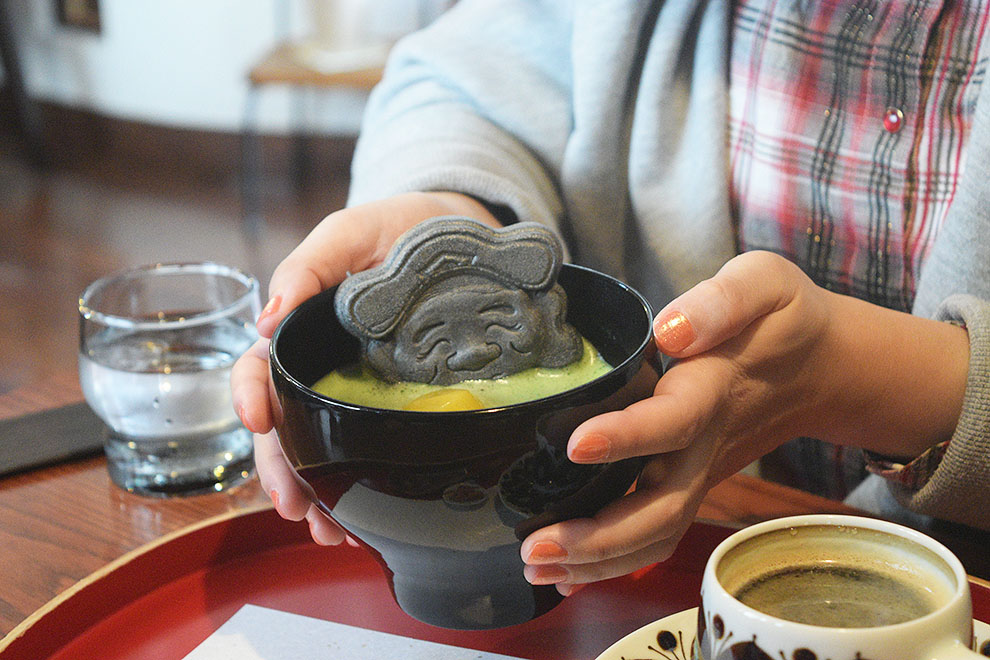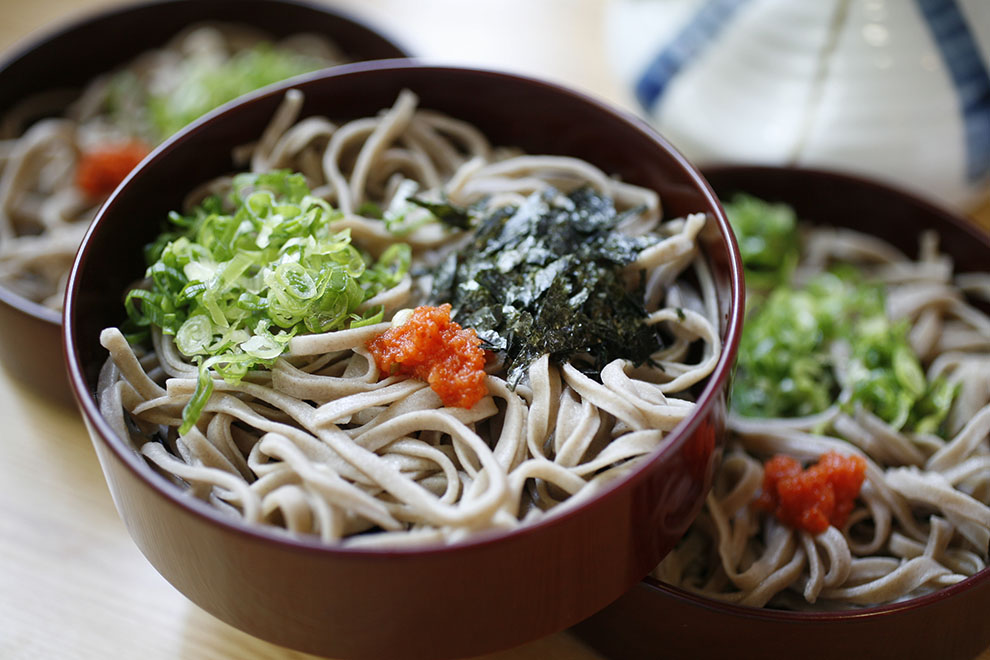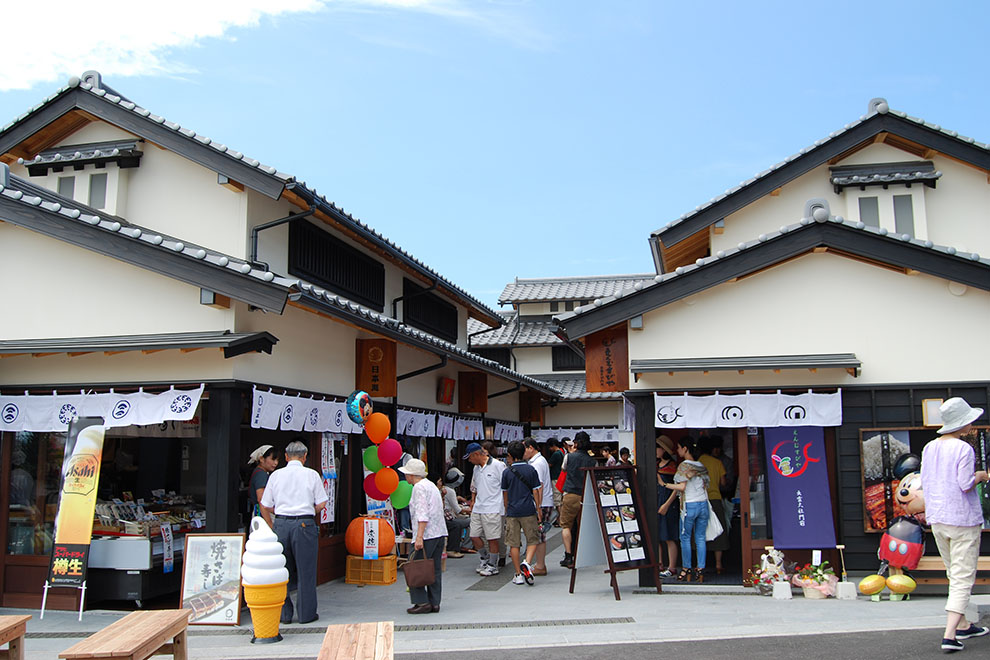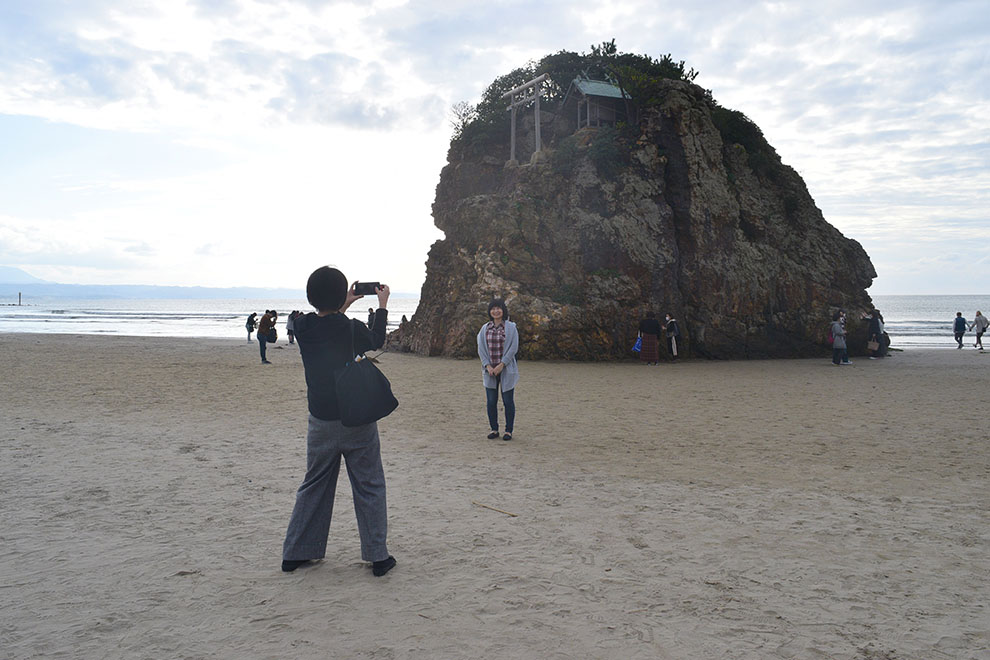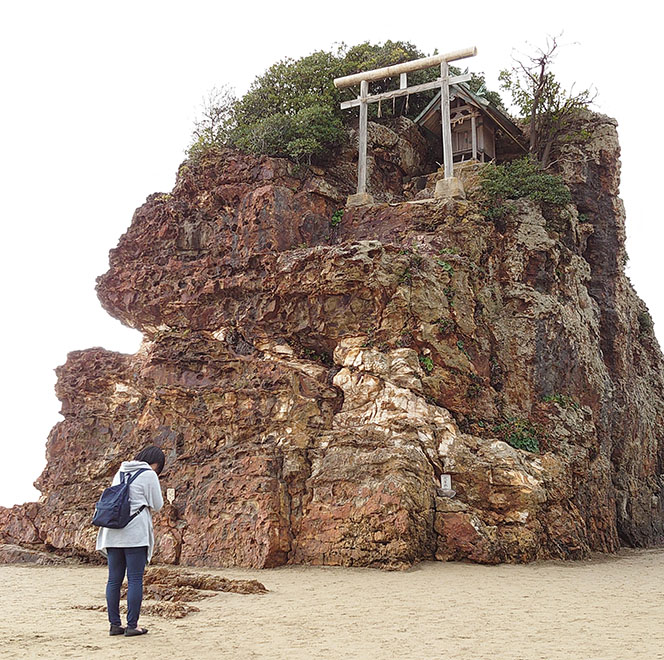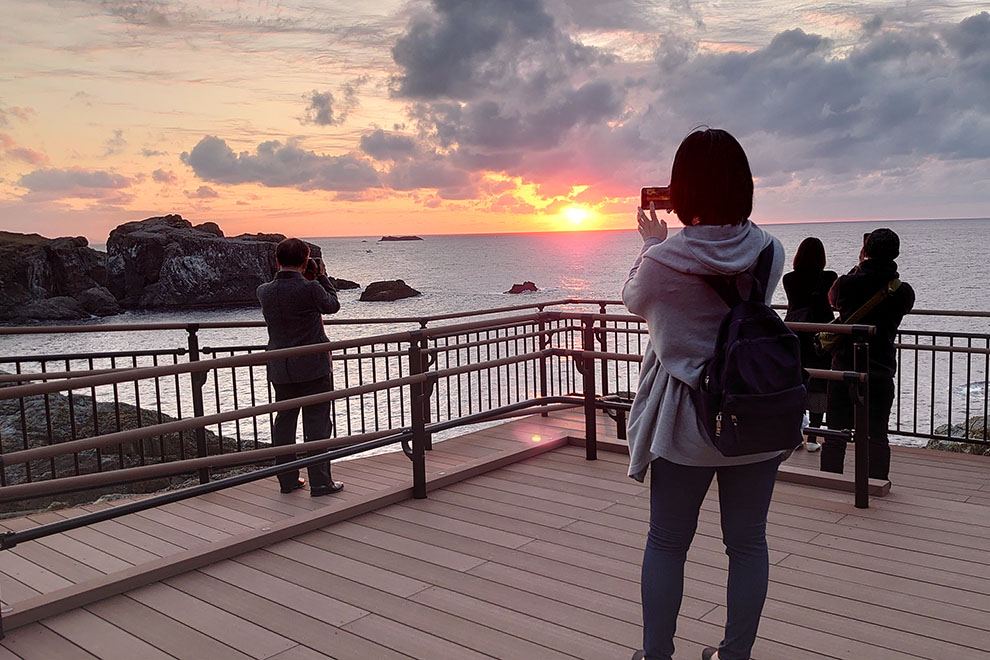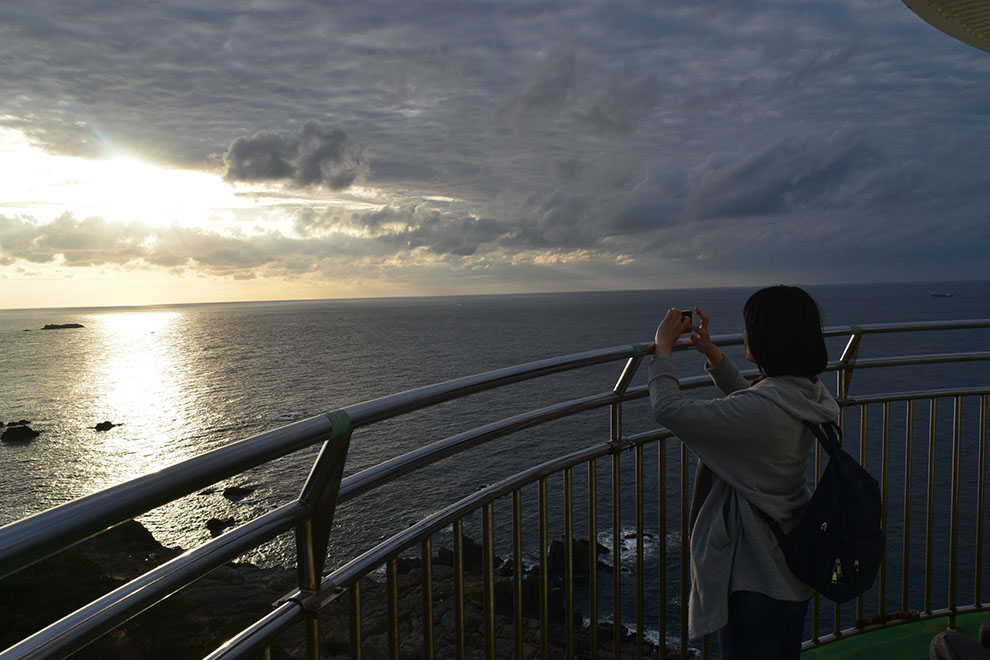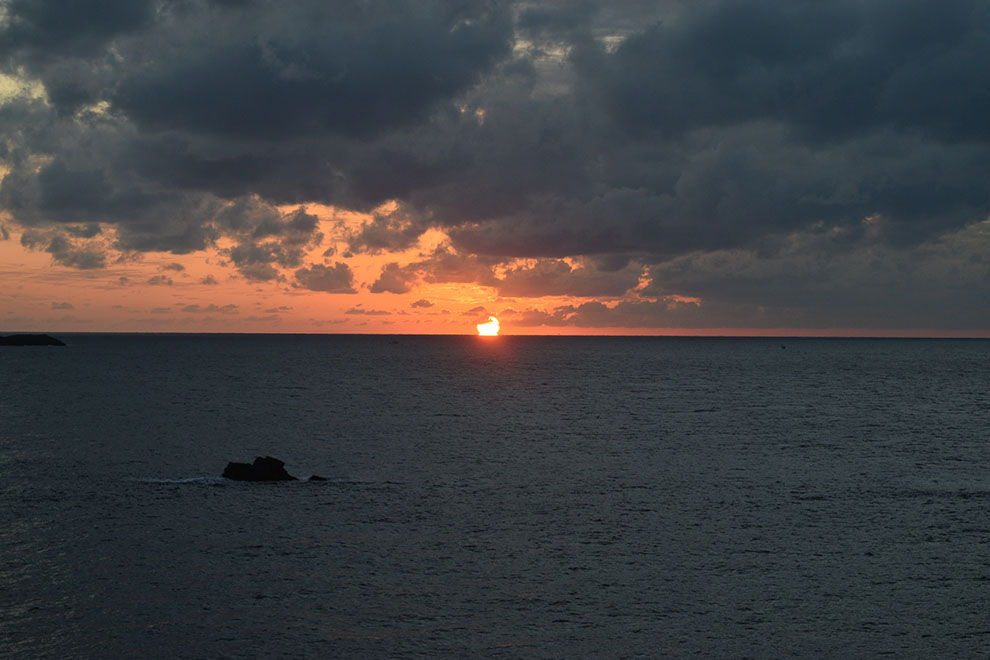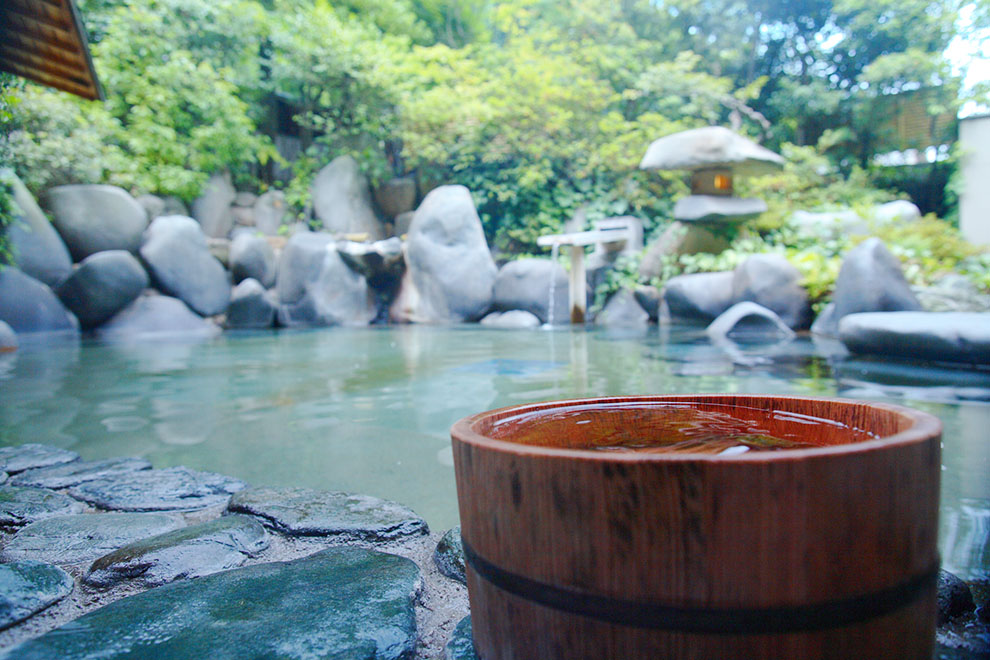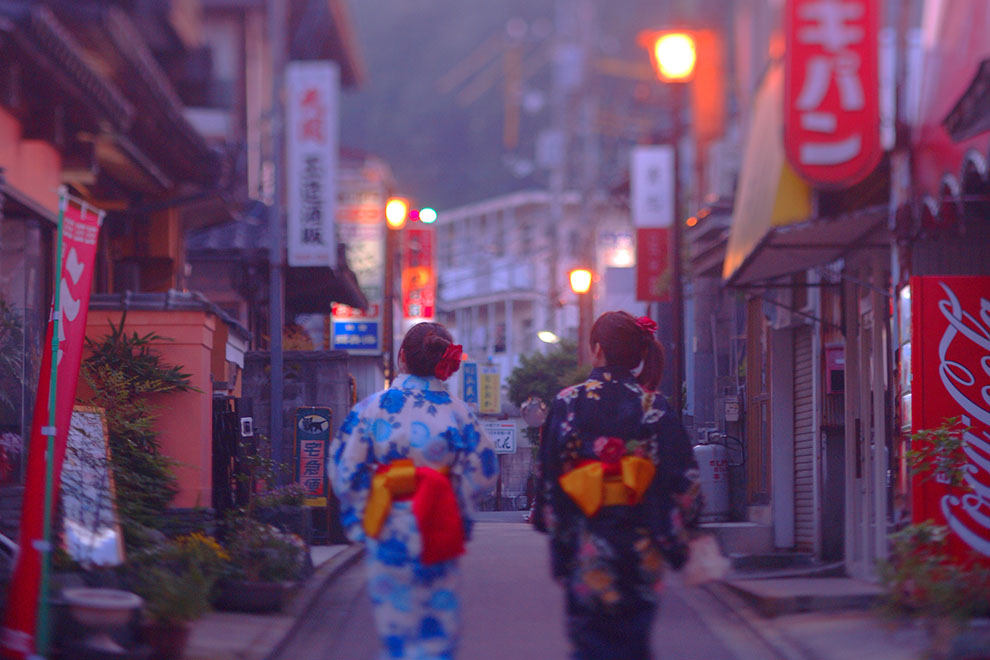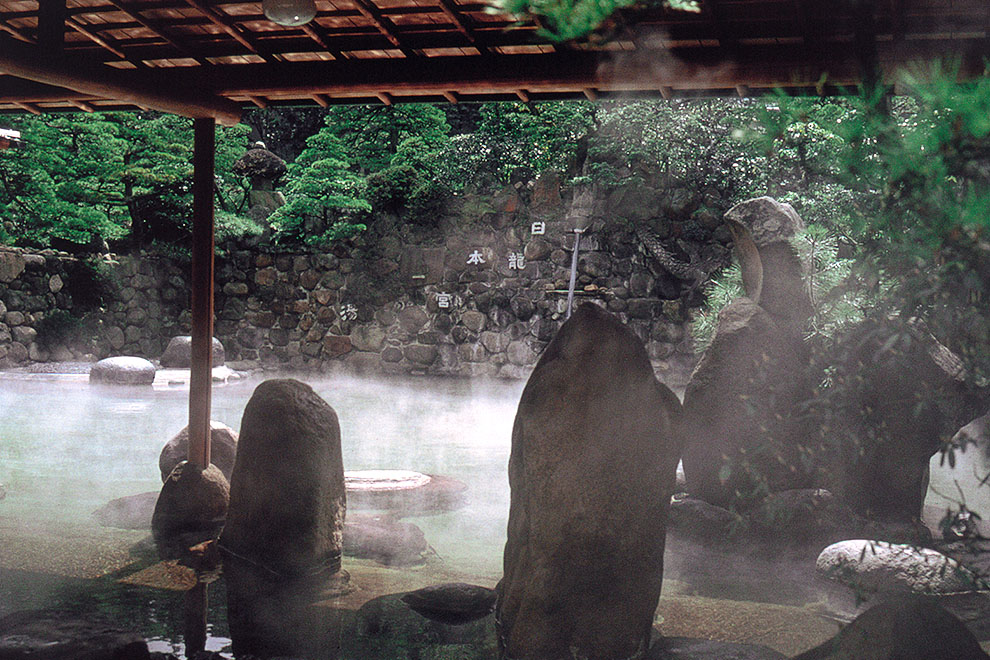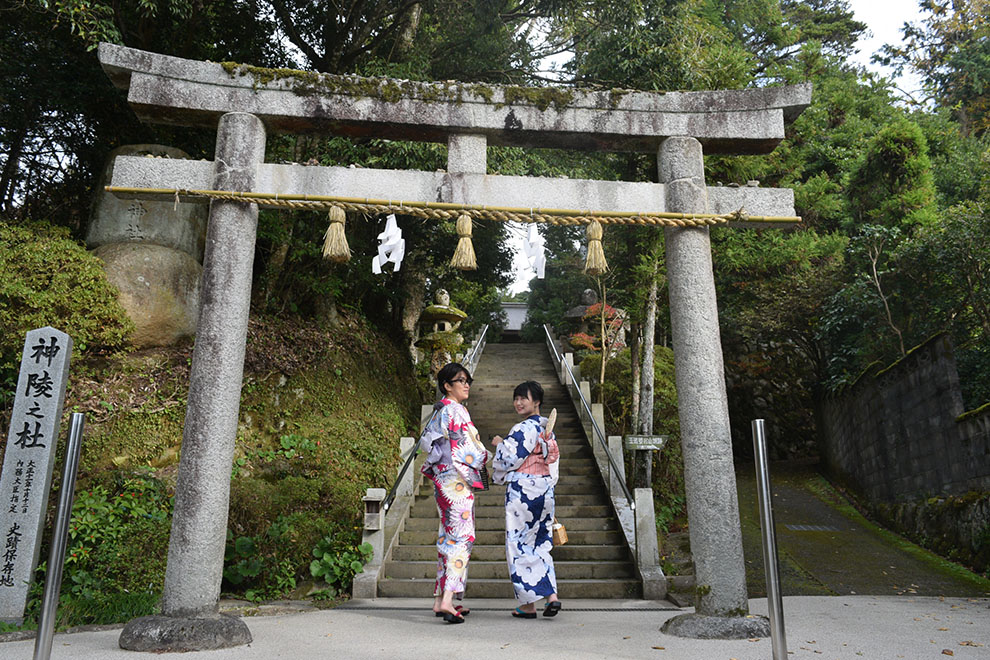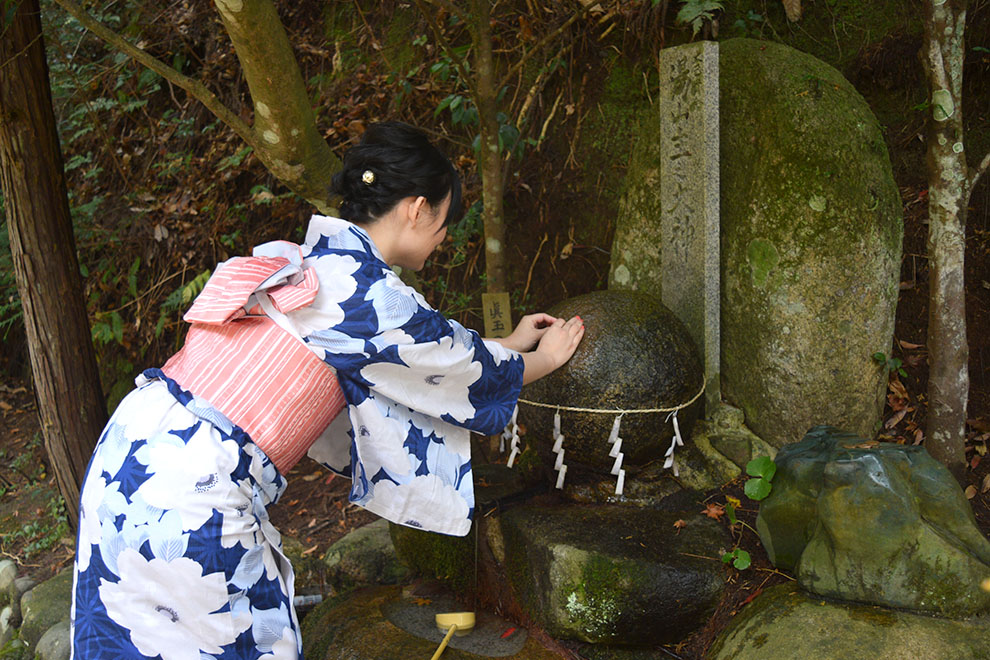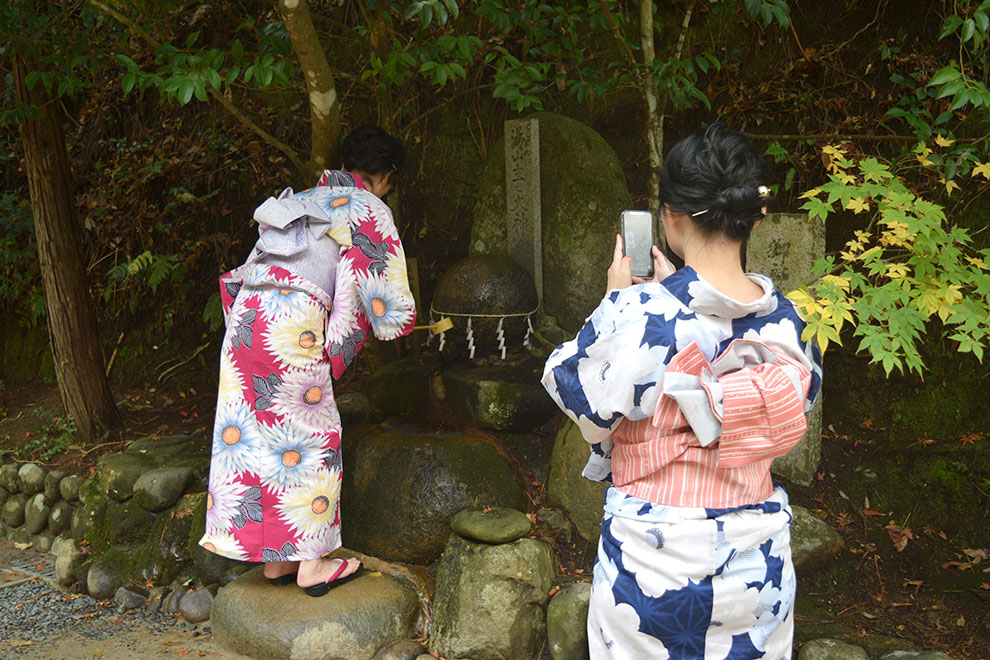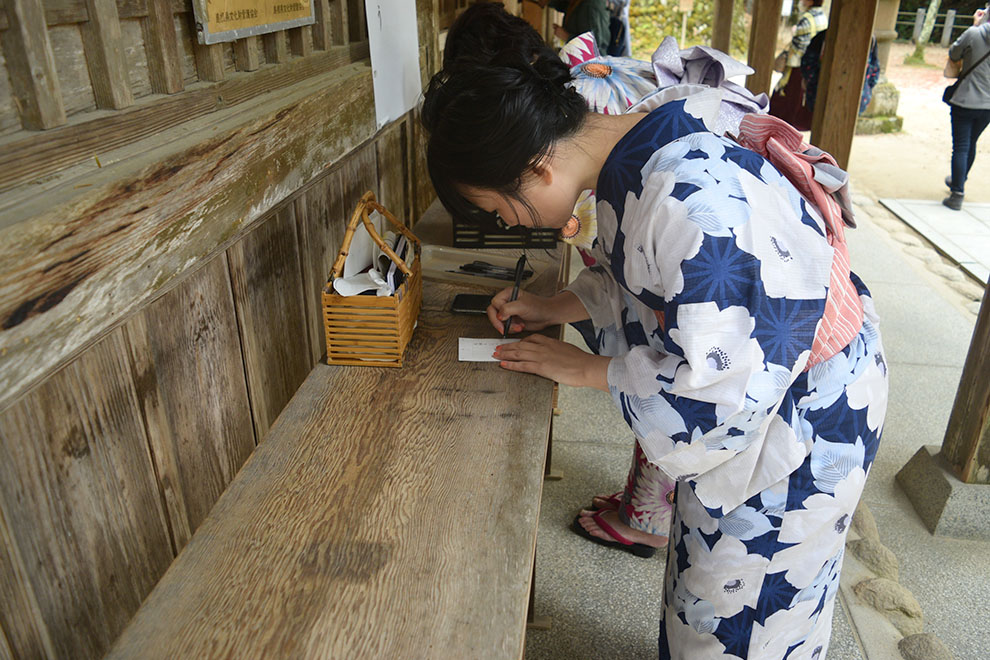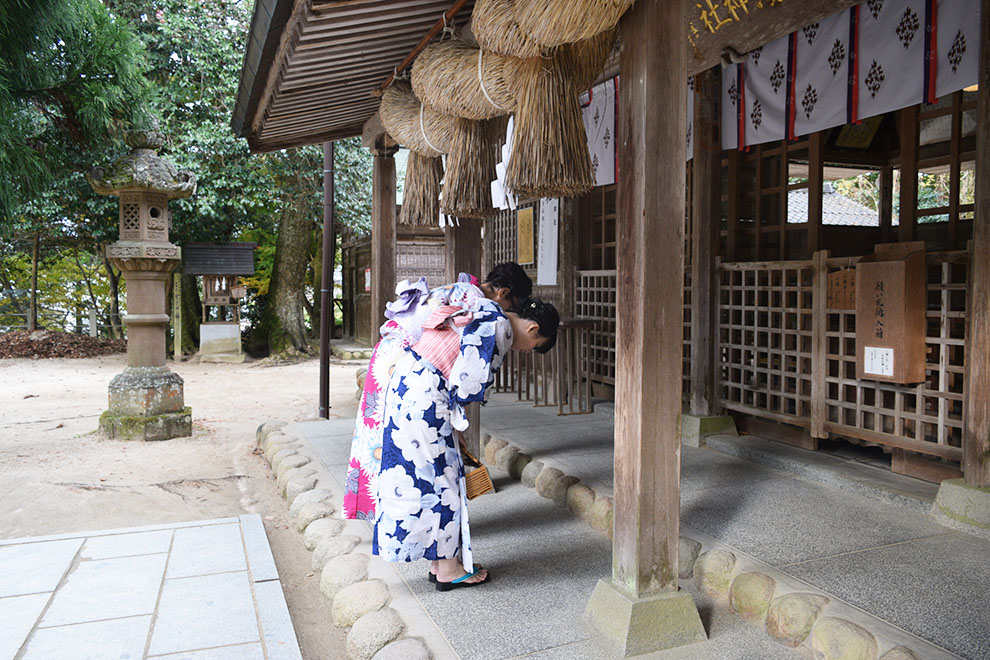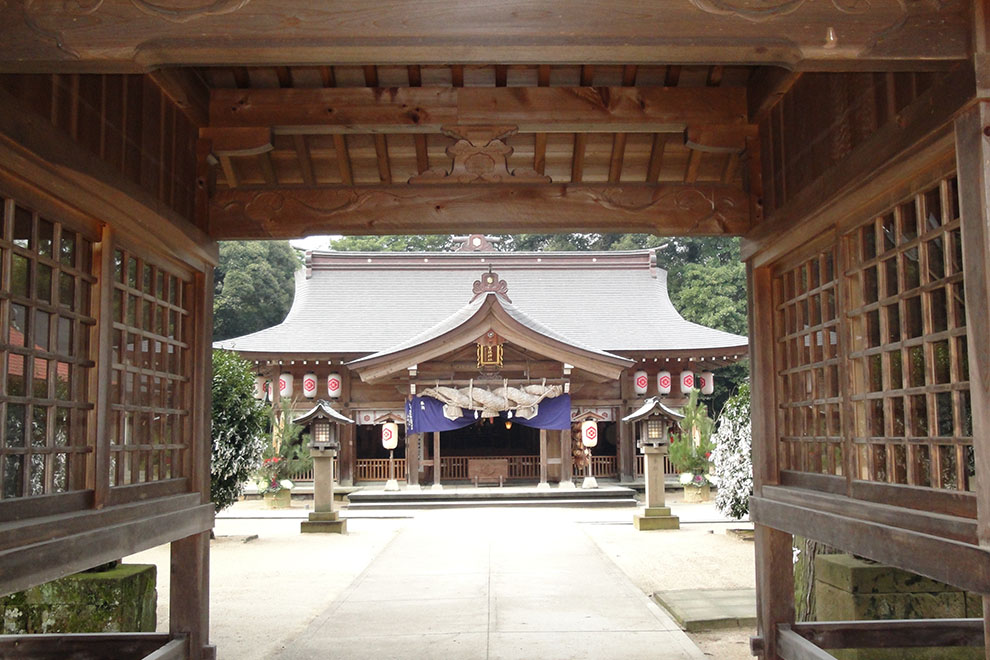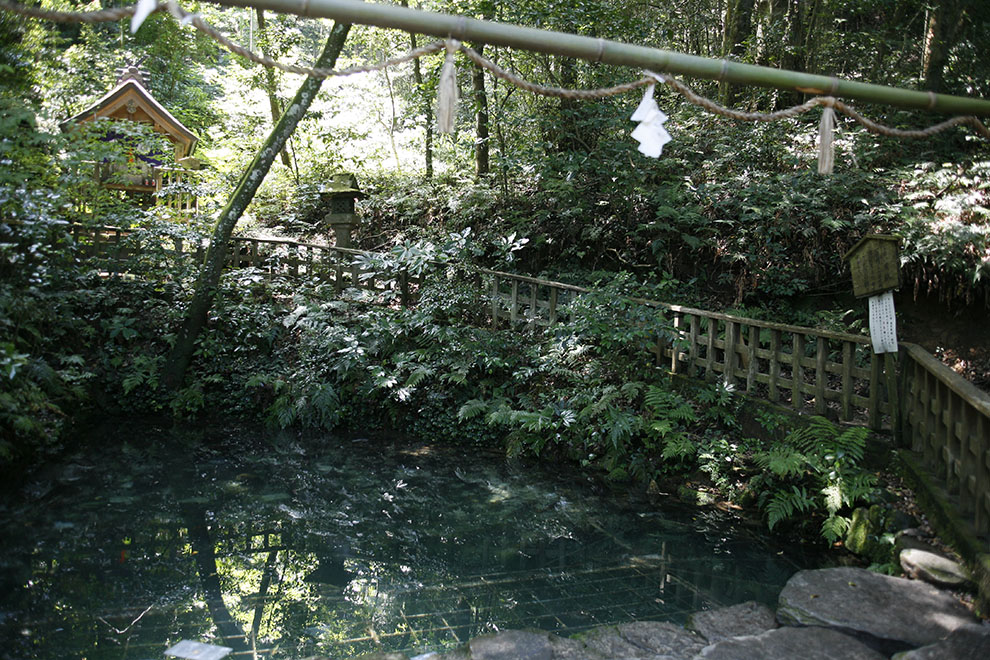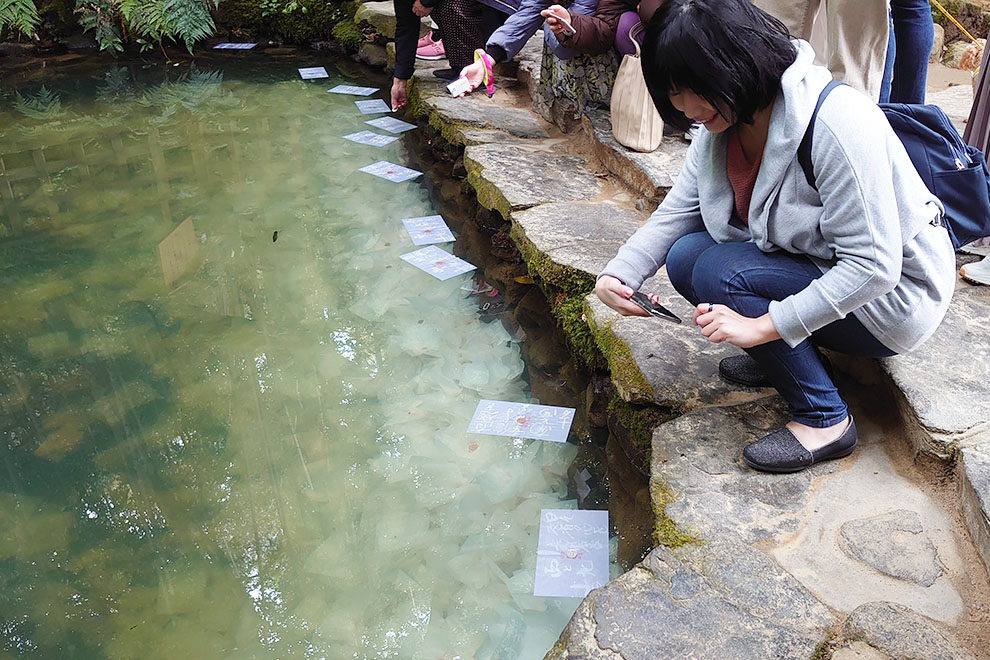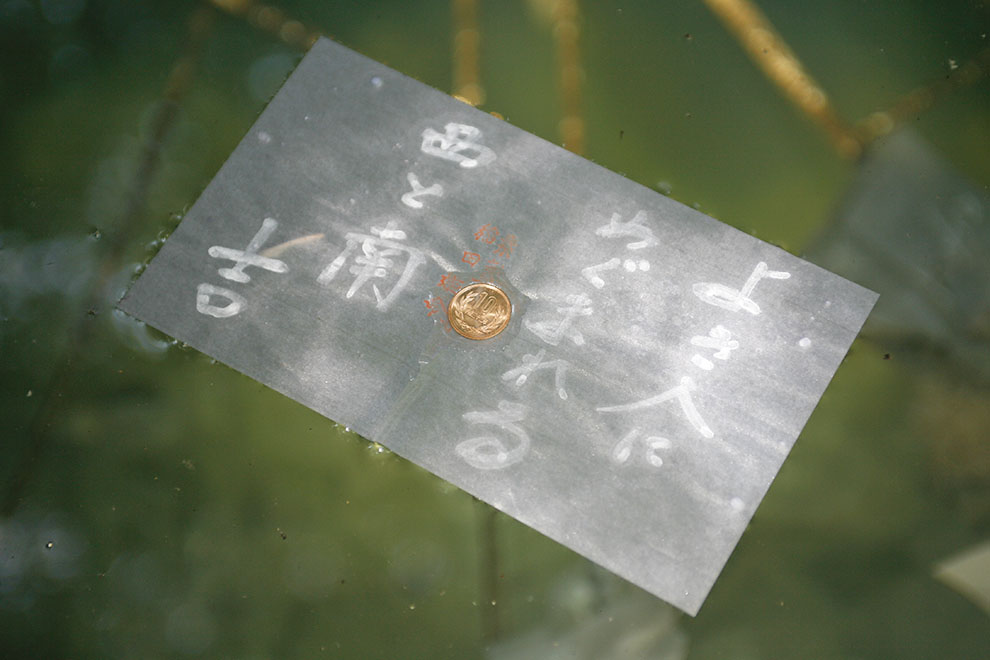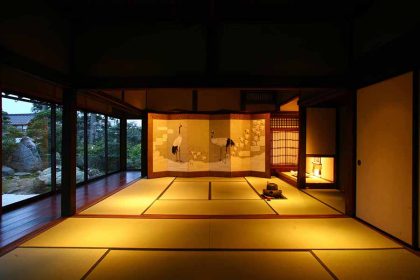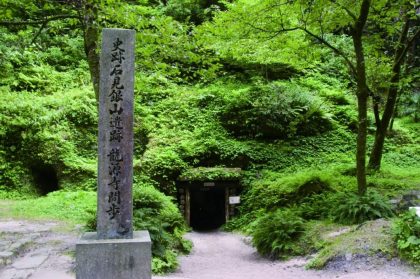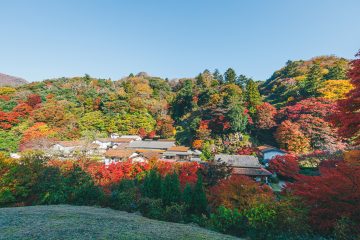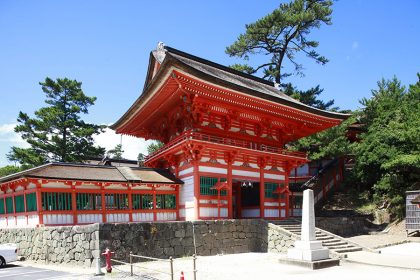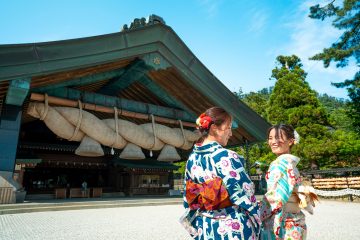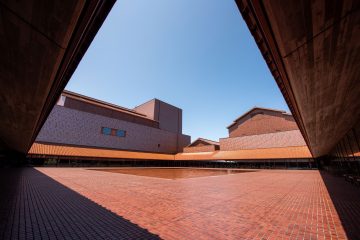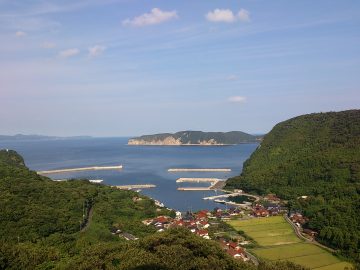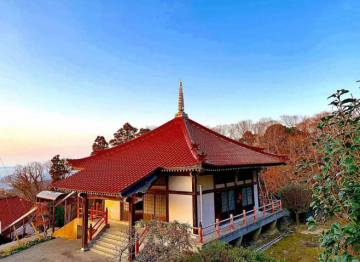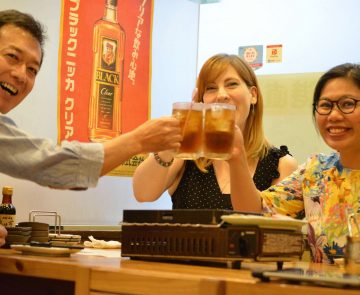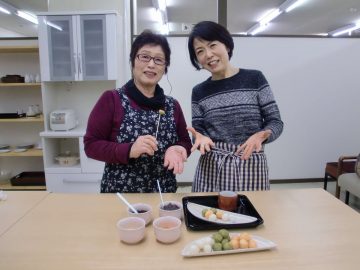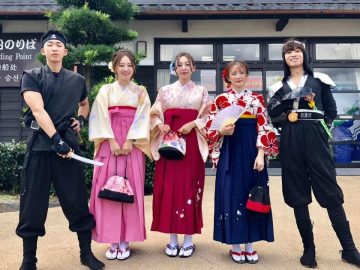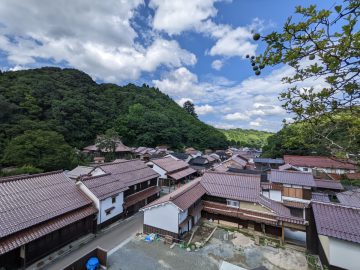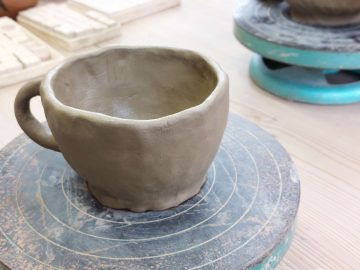Looking for a Match Made in Heaven? Find Love and Happiness on an Enmusubi Tour of Shimane
Four massive torii on Izumo’s ancient path of love
Izumo Grand Shrine is dedicated to the god of enmusubi or good relations, and 6 million people a year, from all over the world, come to worship there.
There are four major torii shrine gates in Izumo Grand Shrine. If you visit the shrine by bus, you will first see the second torii, next to a stone monument with the shrine’s Japanese name, “Izumo Taisha, Oyashiro,” written on it. From here you can see the majestic first torii standing in the distance. You can either visit it after the second torii, or you can walk over and pass through the torii in order, just like the people who came from all over Japan in ancient times, starting your pilgrimage from the pure white first torii.
As you pass through the second torii, there is the small Harae-no-Yashiro on your right. Don't just walk by! Take a moment to cleanse your body and mind and rid yourself of your daily worries. And remember, unlike at other Japanese shrines, the proper decorum for worshipping at all shrines at Izumo Grand Shrine is two bows, four claps, and one final bow!
There are four major torii shrine gates in Izumo Grand Shrine. If you visit the shrine by bus, you will first see the second torii, next to a stone monument with the shrine’s Japanese name, “Izumo Taisha, Oyashiro,” written on it. From here you can see the majestic first torii standing in the distance. You can either visit it after the second torii, or you can walk over and pass through the torii in order, just like the people who came from all over Japan in ancient times, starting your pilgrimage from the pure white first torii.
As you pass through the second torii, there is the small Harae-no-Yashiro on your right. Don't just walk by! Take a moment to cleanse your body and mind and rid yourself of your daily worries. And remember, unlike at other Japanese shrines, the proper decorum for worshipping at all shrines at Izumo Grand Shrine is two bows, four claps, and one final bow!
After worshiping at the Harae-no-Yashiro, continue to descend... That’s right, the path through the torii slopes downward, not upward! With lush forest on both sides, you will forget that the weariness of daily life ever existed. It’s hard not to sit here for the good part of the day savoring this feeling of peace.
After visiting the hai-den (front shrine), the next step is to visit the kagura-den (sacred dance hall) to see Japan’s largest shimenawa (sacred rope for purification), right? No, no, no, just hold your horses, because you haven’t seen the heart of Izumo Grand Shrine yet!
Behind the hai-den is the hon-den (main shrine), where the god of enmusubi is enshrined. To the left, right, and back are other gods and buildings associated with good relations. After sincerely praying to the god of enmusubi, walk to the right and continue your pilgrimage counter-clockwise around the hon-den, which is actually the tallest shrine building in Japan. Admiring the grandeur of the hon-den from the back, you will notice some statues of white rabbits. In such a sacred place, these cute little bunnies make a captivating contrast!
Behind the hai-den is the hon-den (main shrine), where the god of enmusubi is enshrined. To the left, right, and back are other gods and buildings associated with good relations. After sincerely praying to the god of enmusubi, walk to the right and continue your pilgrimage counter-clockwise around the hon-den, which is actually the tallest shrine building in Japan. Admiring the grandeur of the hon-den from the back, you will notice some statues of white rabbits. In such a sacred place, these cute little bunnies make a captivating contrast!
Here’s an interesting tidbit. Did you know that there are lodgings for the gods at Izumo Grand Shrine? The long, thin buildings on the left and right are actually accommodation for gods traveling to Izumo from all over Japan in Kamiarizuki (the tenth month of the lunar calendar). This is where the gods rest after long discussions at the Kami-no-Miya about who will be paired up in the coming year. Better to worship at these buildings as well, don’t you think?
Red and white threads for ryoen
The Japanese word “ryoen” or “good match” refers not only to marriage but all relations in life, including work, friends, and relatives. There are many ryoen that can be prayed for. If you want to hunt for a good job, to find a good lover, or to meet a good friend, you can always come and worship the gods here.
This elegant two-toned thread omamori amulet comes in red and white, auspicious colors in Japan, and a special design is available in Kanazuki. Also available are cute traditional ema wooden plaques on which to write your wishes, as well as a beautiful, collectible shuin shrine seal.
This elegant two-toned thread omamori amulet comes in red and white, auspicious colors in Japan, and a special design is available in Kanazuki. Also available are cute traditional ema wooden plaques on which to write your wishes, as well as a beautiful, collectible shuin shrine seal.
Delightful sweets, souvenirs and more along Shinmondori
Sweet and delicious confectionary fills people’s hearts with love and joy. I suppose this is probably true all over the world. Shinmondori, the straight road leading up to Izumo Grand Shrine, is full of cute souvenirs and specialties such as miniature shimenawa and enmusubi accessories. In particular, you must try the zenzai red bean mochi soup and Izumo soba noodles, two leading Izumo delicacies. The red bean soup is sweet and smooth, not greasy, and the mochi is chewy but not too sticky. As for the soba, the Izumo variety has a unique taste that is not for everyone. I loved it. Just one bite changed my entire opinion of soba noodles. Izumo soba noodles are as smooth as udon noodles and don’t have that typical soba aroma. You should have some to remember your trip by!
There are also several chic and unassuming cafes you can stop by in. The nearby Inasa Beach, Hinomisaki Shrine, and the sunset are also famous local attractions. There’s definitely more than enough at Izumo to spend a full day here!
There are also several chic and unassuming cafes you can stop by in. The nearby Inasa Beach, Hinomisaki Shrine, and the sunset are also famous local attractions. There’s definitely more than enough at Izumo to spend a full day here!
Tamatsukuri trifecta: yukata, onsen, and enmusubi
Looking to soak in a hot spring when you visit Japan? Tamatsukuri Onsen is the place for you!
Tamatsukuri Onsen is a famous and beautiful hot spring area known for waters that are good for the skin. A special feature of the hot spring hotels here is that most of them rent out yukatas. These beautiful casual kimonos and the lovely local scenery make for great photos. There are also footbaths along the riverside and handicraft shops dotted around town.
Tamatsukuri Onsen is a famous and beautiful hot spring area known for waters that are good for the skin. A special feature of the hot spring hotels here is that most of them rent out yukatas. These beautiful casual kimonos and the lovely local scenery make for great photos. There are also footbaths along the riverside and handicraft shops dotted around town.
Going south from Tamatsukuri Onsen Street, you will find Tamatsukuriyu Shrine. Be sure to get yourself a kanai-ishi or granting stone! They’re available to buy next to the shrine’s torii. Each one is different, so trust your instincts and pick the one you feel the strongest connection to!
‧Take out the granting stone in front of the spherical wishing stone on the right of the shrine to make a wish.
‧Sprinkle a scoop of water on the wishing stone, and then another on the granting stone.
‧Put the granting stone on the wishing stone and then put it in the attached small bag after a sincere prayer.
‧Write your wishes, name, and address on the attached prayer paper before you arrive at the shrine. Put the copy in the same bag and, after visiting the shrine, place the handwritten original into the box by the entrance.
‧Keep the bag with you at all times!
‧Take out the granting stone in front of the spherical wishing stone on the right of the shrine to make a wish.
‧Sprinkle a scoop of water on the wishing stone, and then another on the granting stone.
‧Put the granting stone on the wishing stone and then put it in the attached small bag after a sincere prayer.
‧Write your wishes, name, and address on the attached prayer paper before you arrive at the shrine. Put the copy in the same bag and, after visiting the shrine, place the handwritten original into the box by the entrance.
‧Keep the bag with you at all times!
What does the future hold for me?
The last stop of this trip is Yaegaki Shrine in Matsue City. After visiting the shrine, you can go to the Kagami-ike (Mirror Pond) behind the shrine to divine your fortune.
The lovely camellia at the entrance are a beautiful accompaniment to the austere shimenawa, while the mystical atmosphere of the woods in the shrine refresh mind and body.
At Kagami-ike, you can read your own fortune in marriage and other matters. You place a piece of divining paper on the pond and once it hits the water, the poem on it suddenly appears. When and where the paper sinks all have implications. It is said that sinking quickly means that your wish will come true soon, and sinking slowly means that you may have to wait a while longer. Similarly, the closer it sinks to you, the closer you are to finding a good match, while the further it is the further your good match is. I took out my phone to record and time it, trying to take a picture of the moment when the paper sank into the pool. I waited quietly but was a little bit nervous. When would it sink? What should I do if it suddenly drifts away? Apparently, there are no “rules” about the time. Within 15 minutes is supposedly “fast” but don’t feel disappointed if you wait longer than that—you can always go to Izumo Grand Shrine and pray to the gods for help!
The lovely camellia at the entrance are a beautiful accompaniment to the austere shimenawa, while the mystical atmosphere of the woods in the shrine refresh mind and body.
At Kagami-ike, you can read your own fortune in marriage and other matters. You place a piece of divining paper on the pond and once it hits the water, the poem on it suddenly appears. When and where the paper sinks all have implications. It is said that sinking quickly means that your wish will come true soon, and sinking slowly means that you may have to wait a while longer. Similarly, the closer it sinks to you, the closer you are to finding a good match, while the further it is the further your good match is. I took out my phone to record and time it, trying to take a picture of the moment when the paper sank into the pool. I waited quietly but was a little bit nervous. When would it sink? What should I do if it suddenly drifts away? Apparently, there are no “rules” about the time. Within 15 minutes is supposedly “fast” but don’t feel disappointed if you wait longer than that—you can always go to Izumo Grand Shrine and pray to the gods for help!
Shimane was full of fun and surprising techniques and places for improving your chances of finding a special connection. The DIY granting stone amulet was especially memorable. The chance to get away from the hustle and bustle of city life really made me slow down and enjoy the scenery in front of me! Why not relax mind and body and look for love and happiness with a trip to Shimane?





















